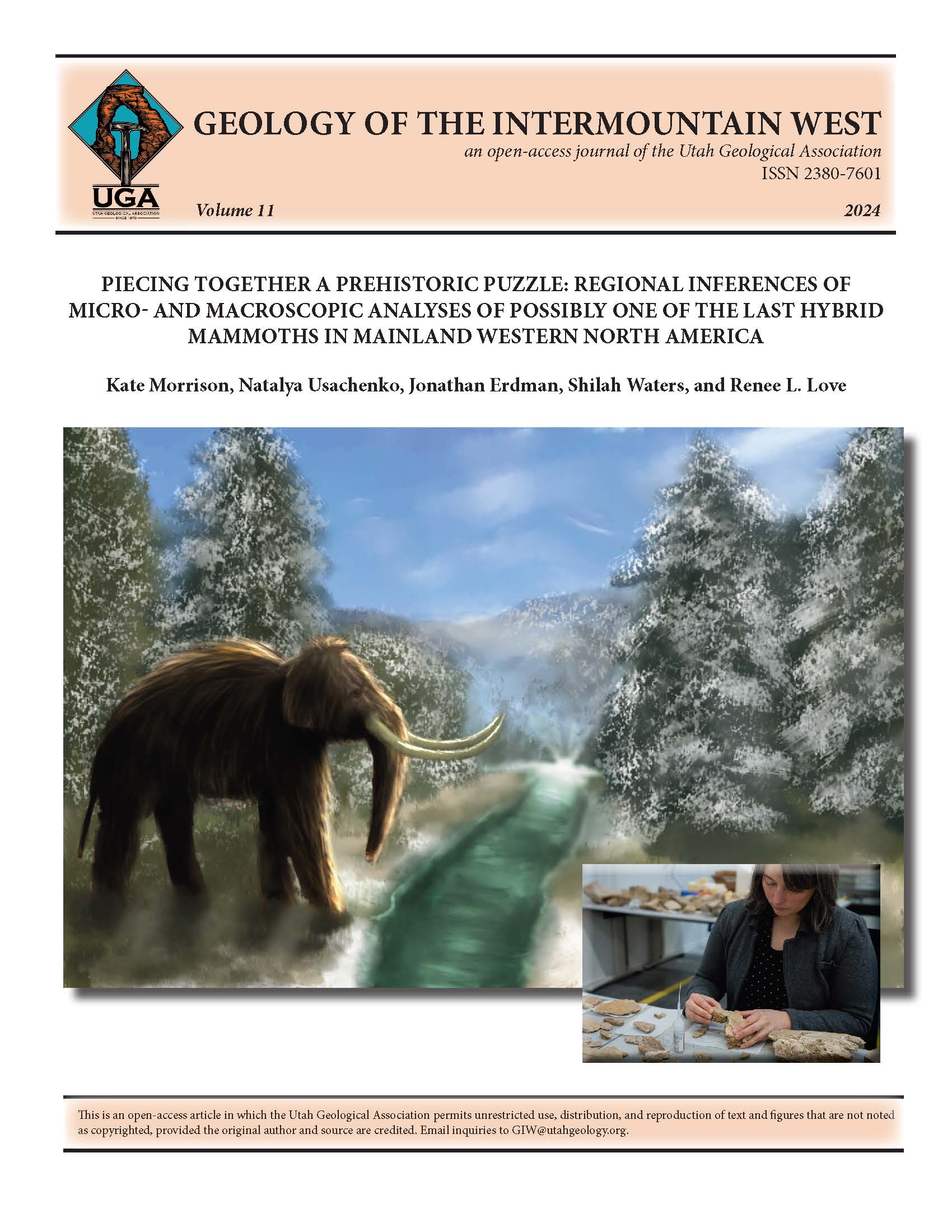Piecing together a prehistoric puzzle—regional inferences of micro- and macroscopic analyses of possibly one of the last hybrid mammoths in mainland Western North America
Abstract
We evaluated the depositional age, taxonomy, diagenetic alteration, and osteology of mammoth skeletal remains from southeastern Idaho. In this study, we identified the first record of M. jeffersonii present in Idaho and only the second record of the species in Western North America that lived 13,586 to 13,444 cal BP. The mammoth remains were preserved in an ancient hot spring deposit and have indicators of possible pre-mortem injuries. The diagenetic processes post-mortem suggest that it was not immediately buried and was gnawed on by small and large carnivores. Our evaluation of the mammoth’s tusks, molars, and limb bones suggest that these remains belonged to a young adult male that had been around 29 years old at its time of death. This specimen lived at a time when mammoths were becoming endangered in western North America before their ultimate disappearance from the fossil record.





